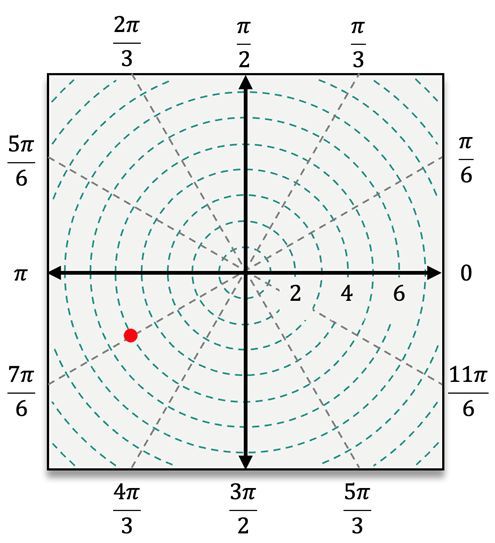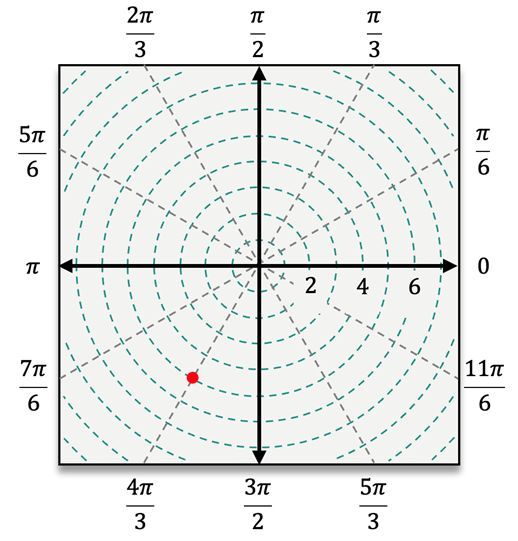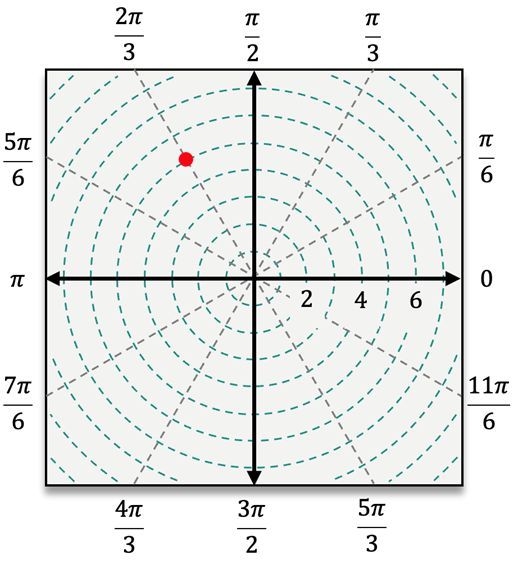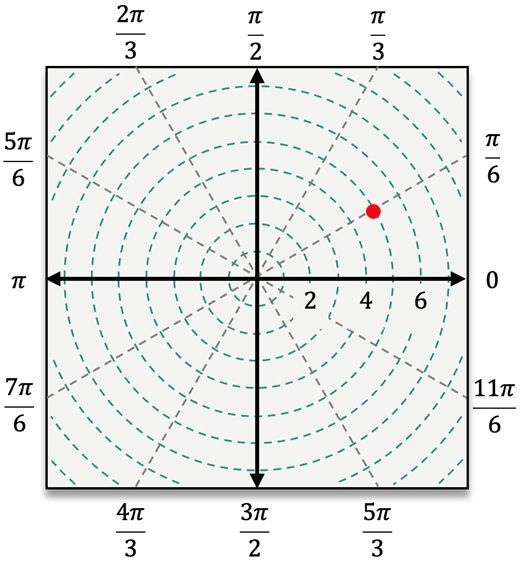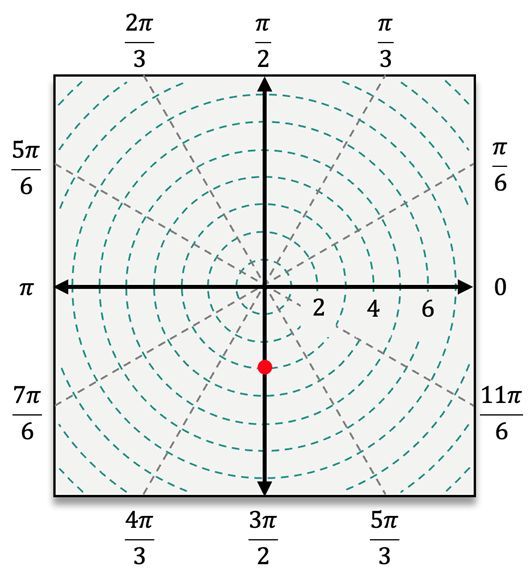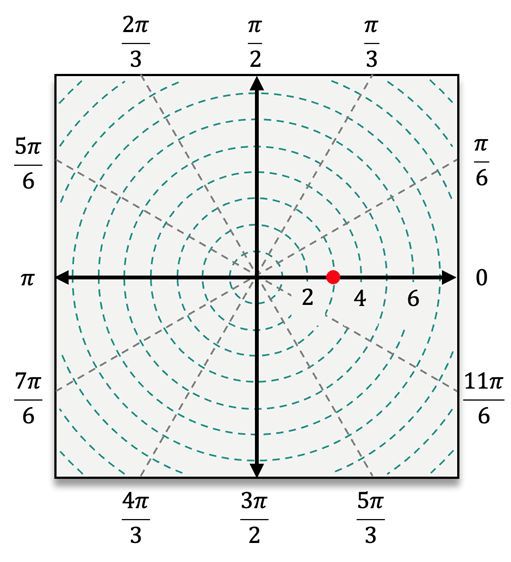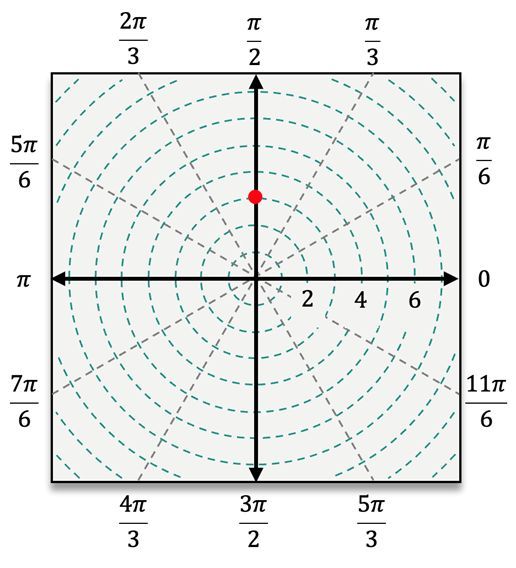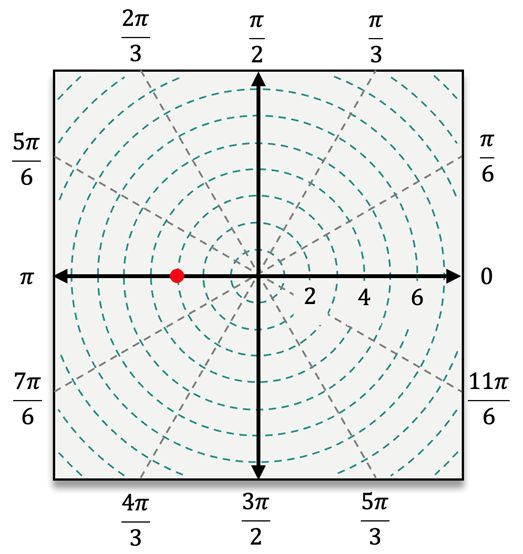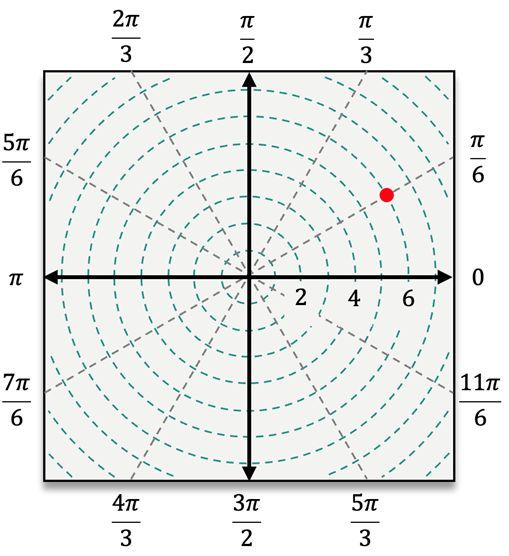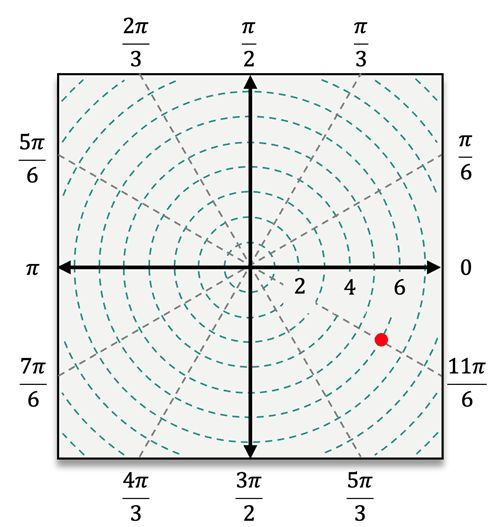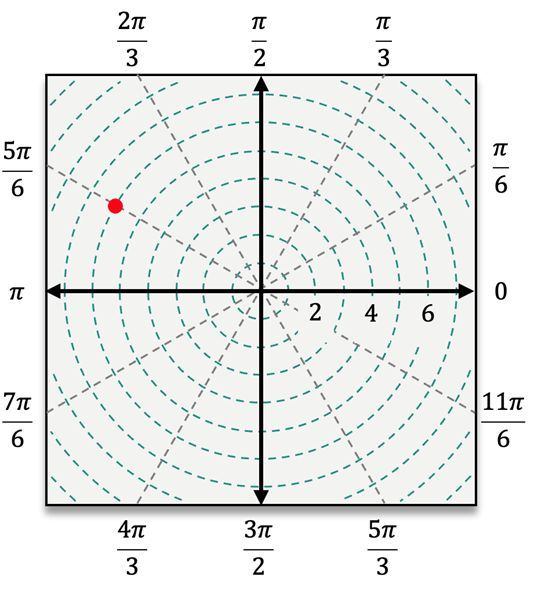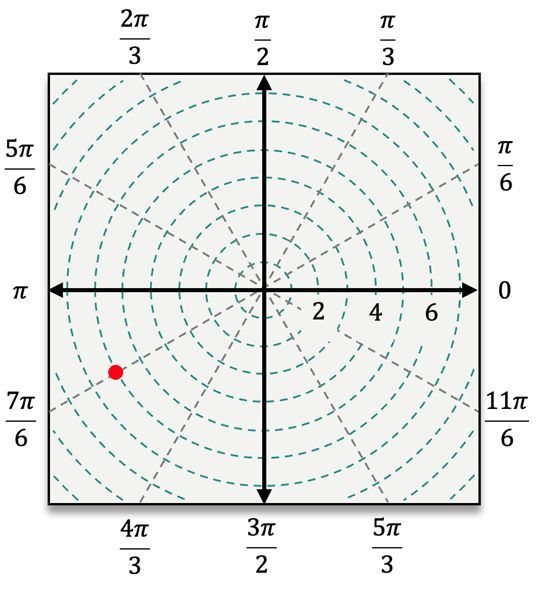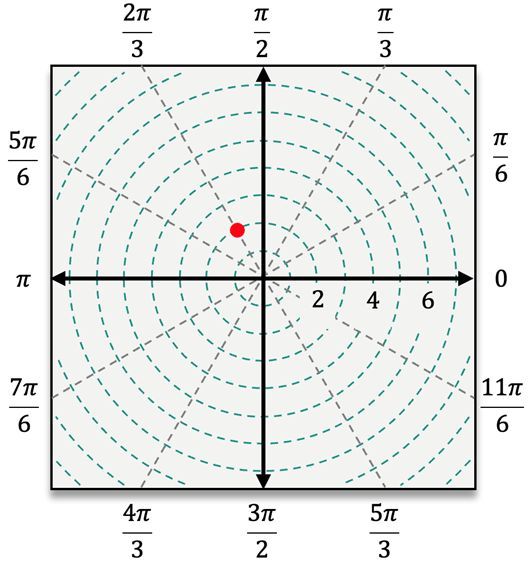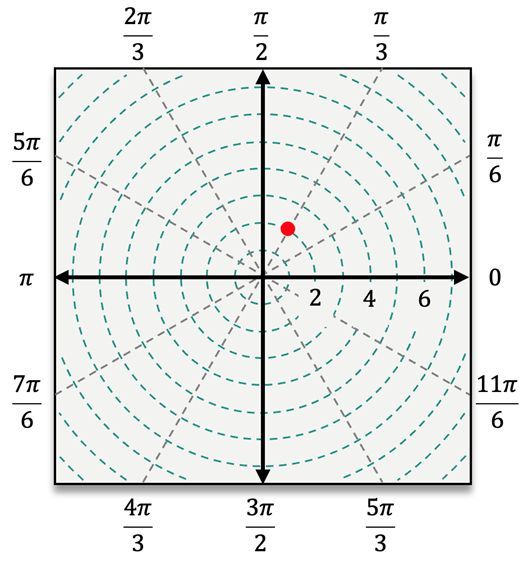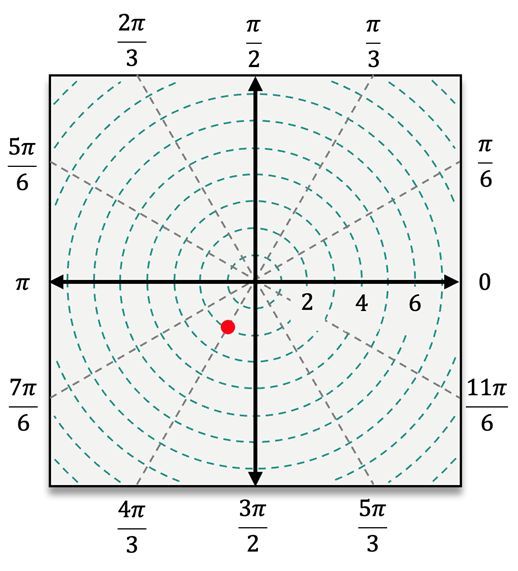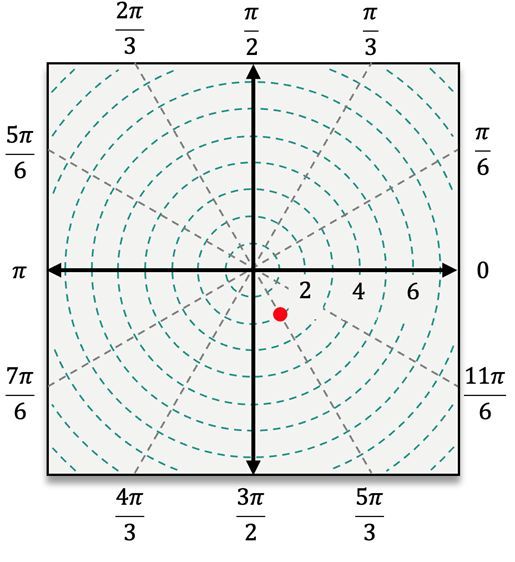In mathematics, the polar coordinate system offers a unique way to represent points in a two-dimensional space using the coordinates \( r \) and \( \theta \) instead of the traditional \( x \) and \( y \) used in the Cartesian coordinate system. Here, \( r \) denotes the distance from the pole (the origin) and \( \theta \) represents the angle measured from the polar axis, which corresponds to the positive x-axis in Cartesian coordinates.
To understand polar coordinates, it is essential to visualize the pole at the origin, where \( r = 0 \). As \( r \) increases, it indicates the distance from the pole, with each value of \( r \) corresponding to a circle centered at the pole. The angle \( \theta \) is measured counterclockwise from the polar axis, similar to how angles are measured on the unit circle. For example, an ordered pair in polar coordinates is expressed as \( (r, \theta) \), such as \( (5, \frac{\pi}{6}) \), where \( r = 5 \) indicates the point is 5 units away from the pole, and \( \theta = \frac{\pi}{6} \) indicates the angle from the polar axis.
When plotting points in polar coordinates, the process begins by locating the angle \( \theta \) on the polar coordinate system. After identifying the angle, the next step is to count \( r \) units away from the pole. If \( r \) is positive, you move outward in the direction of \( \theta \). However, if \( r \) is negative, you will count in the opposite direction, effectively reflecting the point across the pole.
For instance, to plot the point \( (4, \frac{\pi}{3}) \), you first locate the angle \( \frac{\pi}{3} \) and then move 4 units away from the pole. In contrast, for the point \( (5, -\frac{\pi}{3}) \), you would measure the angle \( -\frac{\pi}{3} \) clockwise from the polar axis and then count 5 units outward. When dealing with a negative radius, such as in the point \( (-3, \frac{\pi}{6}) \), you would first locate \( \frac{\pi}{6} \) and then count 3 units in the opposite direction from the pole.
Understanding the signs of both \( r \) and \( \theta \) is crucial when working with polar coordinates, as they dictate the direction and distance from the pole. This system is particularly useful in various fields, including physics and engineering, where circular motion and angular relationships are prevalent.

